
1. Smartcast from Hawkeye Pedershaab - innovative technology for the production of monolithic manhole bases
Smartcast is a production system for manufacturing concrete manhole bases according to the customer's design and order.
The manhole base is the lower part of a manhole. Its function is to facilitate inspection and maintenance of the pipeline, including at points where pipelines are joined together. As the connecting pipelines often have different diameters, materials, angles and slope levels - it becomes necessary to use manhole bases in many different configurations. The challenge is to form all the channels in the base so that each pipeline provides unobstructed flow with minimal risk of organic matter accumulation.
In traditional technology, channels and bunds were formed by hand, either at the prefabrication plant or on site. This way of making the kinettes - especially on site - involved the risk of fluctuating quality levels and was generally a difficult and laborious process.
Today, Smartcast offers a solution in which manual operations are replaced by automated processes, while providing greater flexibility to customer needs and a consistently high quality product.
2. Smartcast - the most flexible solution for concrete manhole bases
The Smartcast system enables negatives for forming sewers to be shaped from a single standard block of EPS (Expanded Polystyrene) using a programmable industrial robot. As the negative is made entirely from a single piece of polystyrene - there is no need to tape the joints of the individual channel fittings.
Fixing the sealing passage negatives on the "Lego block" principle does not require glue or fixing screws. The user-friendly interface allows the required configurations to be created simply and clearly. All that is then required is to enter inlet and outlet angles, pipe diameters and type, as well as slope angles. The cutting robot operator does not need to make any settings and his work is reduced to running the production cycles of the individual orders. The negatives of the kinetas including the rests are formed in a fully automatic cycle by the robot arm.
The Smartcast robotic station can be used as a simple stand-alone EPS milling station or integrated into an automated production system including filling, de-moulding and handling.
The Smartcast is available for the production of manhole bases with diameters from 600 mm to 1600 mm.
3. Benefits of using Smartcast system for monolithic manhole bases:
◎ It is possible to supply any manhole base on an ongoing basis, as the order can be processed immediately after the customer orders it;
◎ The optimum hydraulic profile is automatically calculated for each channel, ensuring uninterrupted wastewater flow through the manhole;
◎ Intuitive web-based software makes it possible to design manhole bases from anywhere - in the office, on site or even at home;
◎ With Smartcast Designer software and an integrated, six-axis, computer-controlled robot, the combinations of manhole channels are virtually unlimited;
◎ Smartcast uses EPS polystyrene blocks available from local suppliers. There is no need to buy ready-made channel shapes exclusively from the equipment supplier;
◎ The base units are manufactured in a single run, with no additional finishing work required - resulting in a truly monolithic product;
◎ Efficient automated production without time-consuming and laborious manual work;
◎ Specialised tooling and coating enable EPS to give an incredibly smooth casting surface, resulting in channels with a glass-like surface.
4. Smartcast infrastructure:
The Smartcast configuration essentially consists of three elements: user, server and robot.
User
The user is the person in the prefabrication company who has an overview of what products need to be produced. This person logs onto the Smartcast server with a username and password. This gives him or her access to Smartcast Designer and all the production details in the company's preferred language.
Server
The server containing the Smartcast software is the cornerstone of the system. It is hosted in a hosted environment and accessible via the Internet. With this solution, the customer does not have to pay for CAD and CAM licences, nor will it incur unexpected hardware or software maintenance costs. In addition, automatic backup of all data is standard.
Robot
The robot is an industrial robot from Kuka and is supplied with an industrial computer. This computer controls the robot as well as the safety system.
The computer receives jobs from the server via the network and places them in a queue. The operator can obtain all the information - including the bill of materials - for each job and it is from here that the robot is started.

This unique integration of the three elements adds up to a flexible yet highly efficient Smartcast infrastructure.
5. Advanced technology - simple operation:
Smartcast offers state-of-the-art robot technology. The interface in a very user-friendly configuration means that it can be operated by anyone with knowledge of manhole base production.
◎ Six-axis milling robot
The heart of the Smartcast system is the robotic milling station.
A multi-axis high-speed KUKA robot, equipped with a precision grinding head, mills blocks of polystyrene (EPS) in negative form for manhole base channels. Depending on the manhole base size and channel configuration, the robot is capable of producing up to five EPS channel profiles per hour.
The robot operates unattended and is precise and reliable. It also comes with a suction and bagging system that collects the ground polystyrene, allowing the residue to be recycled.
The robot can be optionally supplied with software that allows the user to use the robot for other purposes, in case the production of manhole bases does not consume its entire production capacity.
◎ Smartcast Designer
Programming of the robot for the Smartcast Base system is done automatically when the manhole base data is entered into Smartcast Designer. This software can be accessed from a standard office PC via the Internet.
The manhole base is designed by entering key parameters such as the number of inlets, their diameter and orientation and their height (invert level), the size of the drops, the type of connections, the angle of the channel, etc. All this is done via a user-friendly cloud-based interface. The system can be run as a standalone or integrated into a company's existing ERP system.
Because Smartcast Designer is browser-based, manhole bases can be designed from any computer workstation (PC, laptop, tablet or even smartphone), including from the workplace or from home. Once the manhole base has been designed, the end user is emailed a full production drawing for final approval.
Once approved, the manhole base design can be routed to production with a single click.
◎ Refined CAD and CAM software
Behind Smartcast Designer stand refined CAD and CAM software systems. Key variables entered into Smartcast Designer are constantly checked by the software for any anomalies/collisions. This ensures smooth and reliable data entry.
Once all bottom data has been entered, a 3D model of the polystyrene moulding is automatically generated using an advanced parametric model. This allows visual inspection of the polystyrene negative section and the manhole base before validation.
Once the CAD model is approved, the CAM software automatically generates the robot programme and passes it to the computer queue. From here, the operator starts work by selecting it from the queue as soon as the EPS raw material is placed in the milling station.
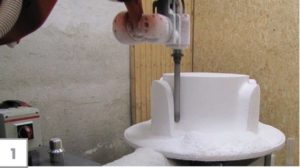
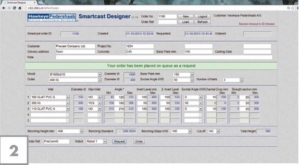

◎ Smooth change of channel diameter
If the main inlet has a different diameter to the outlet, the channel in the pit will gently change diameter between the two pipe connections.
◎ Connections of large-diameter pipes in thin-walled bases:
In some locations, the inside diameter of the manhole base can be reduced to allow larger pipes to be connected without increasing the overall wall thickness. This function is also possible with the Smartcast system.
◎ Socket angle up to 15%:
To enable the connection of sloped pipework, the sockets in the walls can be rotated by an angle of up to 15% depending on the pipe diameter and the wall thickness of the manhole.
◎ Deep channels milled in a single operation:
Due to the nature of the robot, EPS models for making very deep channels can be made in a single operation. This eliminates the need to cut and glue individual EPS parts together. For example, a 1200 mm diameter channel in a DN1600 manhole base can be made in a single milling operation.
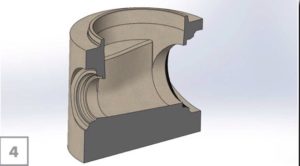
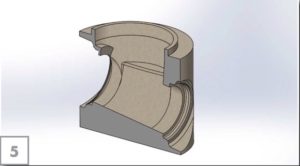
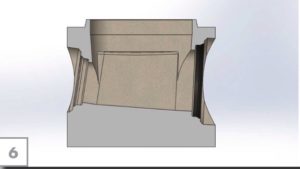
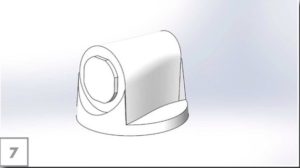
◎ Overlapping channels:
Even channels that overlap horizontally but are offset vertically can be fitted together. This can happen if one of the inlets/outlets is at a much higher level than the others.
◎ Easy installation of forming elements with EPS:
The connection of the polystyrene negatives of the sealed pipe transitions to the main core of the cinette is made using a simple locking system without the use of glue or screws.
◎ Tool station for automatic tool changing:
The robot can be equipped with components for automatic tool changing. For this purpose, a magazine with various milling bits prepared is required.
◎ Coating the polystyrene surface:
After milling, a coating is applied to the surface of EPS components. This results in a smooth surface of the finished product. This also allows the EPS elements to be easily removed in one piece during de-moulding.
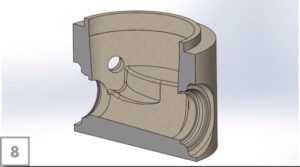
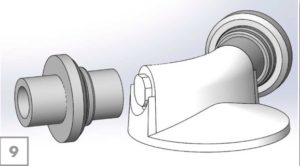
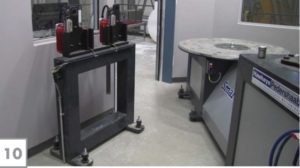
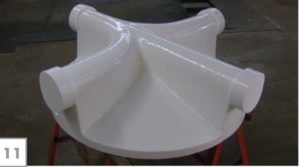
◎ Cutting the fittings for the watertight transitions to the correct outside diameter
Once the EPS elements have been assembled and coated, they are then cut to the correct outside diameter of the mould using a hot wire station.
◎ Hydraulic lifting and turning arm
A hydraulic lifting and rotating arm is used for de-moulding. The rotating arm can be suspended from an overhead crane or integrated into the structure for automatic operation.
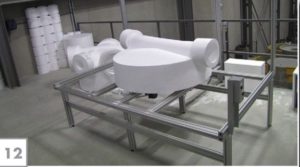
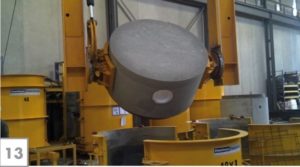
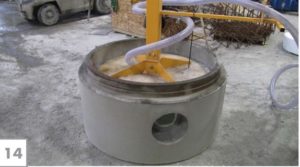
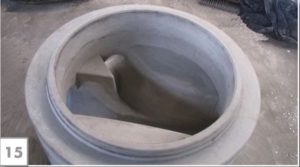
6. Customer benefits of the SMARTCAST system for monolithic manhole bases:
- Saves money and space: small amount of polystyrene (EPS) required in stock;
- Ability to use EPS blocks from different sources (not necessarily from the equipment supplier), also from local EPS suppliers (saves on transport costs);
- Unlimited possibilities for bottom design and channel combinations thanks to Smartcast Designer software and the integrated, six-axis, computer-controlled Kuka robot with milling tip;
- Smooth and delicate surface of the finished product: specialised tooling and coating enable EPS to give an incredibly smooth casting surface, resulting in flow channels with a glass-like finish;
- Time saving: time consumption for the EPS core is very low and the operator can carry out other activities while the robot is working;
- Efficient production without lengthy and laborious manual work: the manhole bases are produced in a single cycle, with no additional finishing work required, resulting in a truly monolithic product;
- Improved flow through the manhole base, especially when changing the diameter of the main channel from inlet to outlet (the optimum hydraulic profile is automatically calculated for each channel, ensuring uninterrupted flow);
- Advanced design software for error-free, easy and fast programming;
- A top-of-the-range KUKA robot with access to a KUKA hotline.
Undoubtedly, an even greater benefit for customers is offered by the possibility of using the solution offered by Afinitas, i.e. a system that combines HawkeyePedershaab Smartcast and BFS Capitan technology to create a unique manufacturing system for the production of wet cast manhole bases and other specialised precast components.
You can read more about the benefits of this solution HERE.


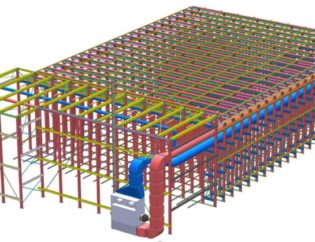
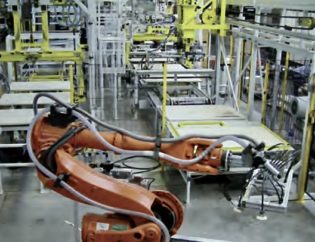
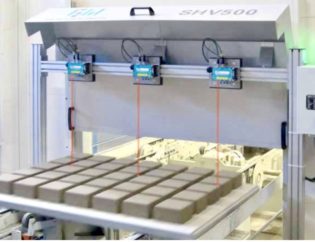
You must be logged in to post a comment.